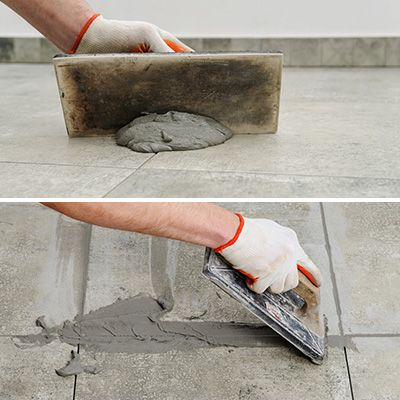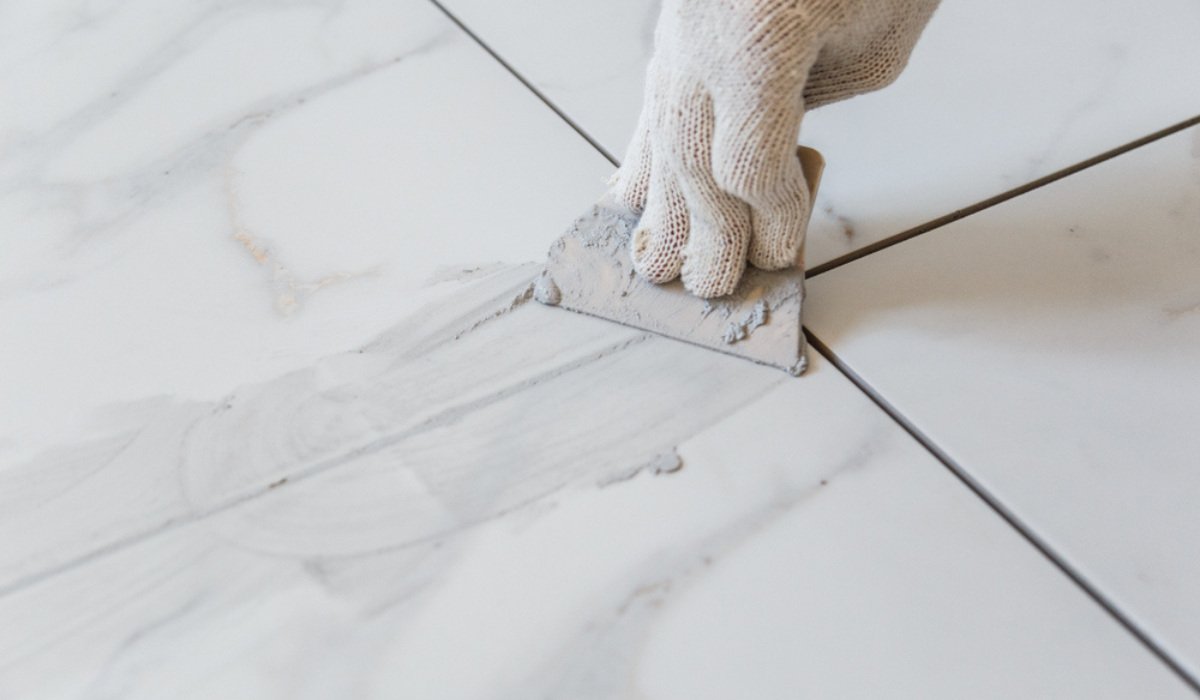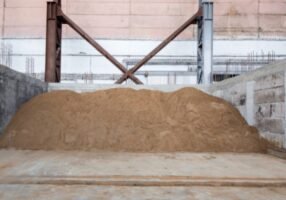Grout is a liquid used for waterproofing that is often made by combining sand, cement, water, or a chemical compound. Construction projects often make use of many types of grout materials to fortify edifices, including but not limited to pile foundations, ground anchors, under reaming, dam and road building, etc. Grout is also used to secure the tiles to the floor and walls, preventing water from leaking in via the roof or outer walls. Grouting is the process of applying grout in a variety of construction-related contexts.

Source: Pinterest
Grout: Features
- It’s a single-ingredient product that may be used straight out of the box after adding water and mixing.
- You can pour it or pump it, depending on what you’re trying to accomplish.
- Its consistency can be adjusted
- It bonds well with concrete, which is an important factor.
- It provides a large surface area for bearing loads.
- It’s flammable but not poisonous.
Grout: Types
Depending on whether it will be used for a pile foundation, ground anchor, under reaming, dam construction, road construction, waterproofing a structure, etc., the material used to create grouting is different each time.
Cement grouting
Most people’s experience with grout comes from the cement-based kind. In the past, your only alternatives for these grouts were porous and easily stained sanded or unsanded varieties. They have a wide range of possible uses, from indoor to outdoor to underwater. These are often simpler to implement. Numerous constructions, including bridges, marine applications, dams, and rock anchors, employ cement grouting to give stabilisation and strength.
Chemical grouting
Permeation grouting may also take the form of chemical grouting. When cavities in granular soils are filled with low-viscosity, non-particulate grout, the resulting material resembles sandstone in appearance. The method works well on coarse sands with a few smaller particles.
Resin grouting
Injecting resin into damaged pipelines or tunnels is a kind of grouting. As part of the trenchless restoration procedure, the material is injected under pressure into fractures or other imperfections.
Bentonite grouting
Pumpable grouting material composed of high solid sodium montmorillonite, bentonite is used to seal or block water wells.
Bituminous grouting
Grouting using bitumen is sometimes known as asphalt grouting. To perform this grouting method, asphalt material is injected (similar to roofing tar). Large inflows (often more than 1,000 gpm) are the primary target of this technique; however, its flexibility, once healed, may find other uses. When conventional grouting processes fail to owe to grout washout, bituminous grouting is sometimes the only option.
Grout: Advantages
- As long as the vibrations in the building are minimal or can be managed, the structures should not be damaged by grouting.
- The site’s framework is strengthened via grouting.
- Slab jacking, which entails the raising of a distorted structure by using a hydraulic jack to support its weight, is aided by grouting.
- Filling gaps in walls and columns with grout is a beneficial task.
- It’s useful for limiting the seepage of toxic substances and groundwater seepage.
Grout: Purpose
Tiles are thermally flexible and may expand or compress as temperatures change. Grout, used to fill the gaps between tiles, can take the strain without causing the tiles to break. Grout, if done properly, may give your tilework a polished, finished effect and, depending on its breadth and colour, can draw attention to or downplay the patterns in your tiles.
In addition to keeping tiles in place and preventing them from sliding around, grout also makes it simpler to construct mosaics and complicated tile designs. Grout seals the space between tiles, making it impossible for debris like dirt and germs to get trapped there. When it’s time to clean, you won’t have to strain as hard to do so either because of this. This also reduces the likelihood of moisture damage by preventing water from leaking into the flooring.
Prefabricated constructions employ it to fix machines’ base plates, load bearing and pillar joints, and machine foundations. Filling holes and fissures in a concrete surface using grout. In addition to these obvious applications, it is also put to use in mines, tunnels, and dams to prevent water seepage in the stability of soils and the prevention of landslides. For complex geotechnical and structural issues, grouting is the go-to repair method. Grouting is used to fix fractures and other damage in masonry and concrete.
FAQs
What's the purpose of the grout?
Most of the time, grout is used to fill gaps and seal joints, like the spaces between tiles. Grout fills in those spaces and keeps the tiles from shifting or cracking along the edges over time.
Is grout harder than cement?
Grout is more sticky and holds things together better, but concrete is stronger and lasts longer. In the construction industry, the grout vs concrete debate will never end because each product has its own pros and cons.
Is grout good for tile?
Grout has a number of great advantages: It makes your floor or wall look nice and clean. It helps keep dirt and debris from getting in between and under your tile. It makes the tile installation more stable and strong.
| Got any questions or point of view on our article? We would love to hear from you. Write to our Editor-in-Chief Jhumur Ghosh at [email protected] |
Housing News Desk is the news desk of leading online real estate portal, Housing.com. Housing News Desk focuses on a variety of topics such as real estate laws, taxes, current news, property trends, home loans, rentals, décor, green homes, home improvement, etc. The main objective of the news desk, is to cover the real estate sector from the perspective of providing information that is useful to the end-user.
Facebook: https://www.facebook.com/housing.com/
Twitter: https://twitter.com/Housing
Email: [email protected]











